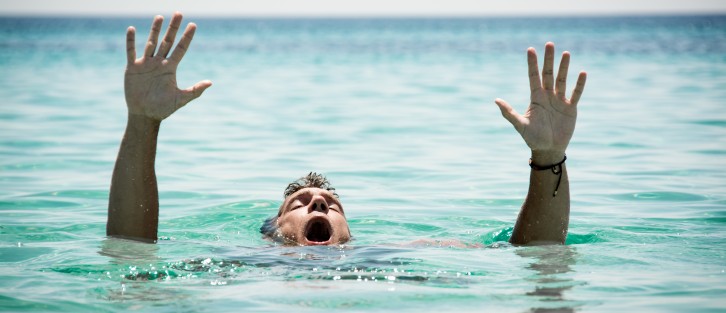In the last week 12 people have drowned in the UK Waters which included 5 young men on a day trip to Camber Sands in Essex. Thankfully a six-year-old boy was saved from drowning on Wednesday from a seafront lagoon in Southend. Apparently he had wandered into a 2m-deep section and struggled to keep afloat before disappearing under the water.
So why are we so seemingly unaware of the dangers of UK Waters? Probably because we are not used to hot weather and swimming in the sea. On these unusually hot days we flock to the beaches and cool down in the sea with little forethought about what may be lurking out there.
The Royal National Lifeboat Institution (RNLI) is urging people to “respect the water and only swim where there are lifeguards.
This year, the RNLI is patrolling 238 beaches across the UK and the Channel Islands. It advises that “seconds count” when there is an emergency in the water and that its lifeguards responded to more than 17,000 incidents last year.
“For the best chance of survival, you need someone on the beach who can see the dangers develop: someone who can prevent accidents before they happen and respond instantly if they occur,” it says. Lifeguards will now be on duty over the bank holiday weekend at Camber Sands.
So how do you stay safe on the beach?
- Swim where there are lifeguards. The area between two red and yellow flags is patrolled by lifeguards and is the safest place to be in the water.
- The areas between black and white chequered flags are for water sports like surfing and kayaking. People should not swim in these areas
- An orange windsock means strong or offshore wind and inflatables should not be used in these conditions
- A red flag means it is dangerous to go in the water
What to do if you are caught in a rip current
A rip current is a narrow channel of fast-moving water and they can be difficult to spot. “They can sometimes be identified by a channel of churning, choppy water or debris on the sea’s surface,” explains the RNLI
They are dangerous as they can drag people out to sea and can reach up to 4.5 mph (7.2km/h). It may not sound fast but to put it into perspective it is quicker than Team GB swimmer Adam Peaty’s world-record pace in the 100m breaststroke at the Rio Olympics.
- Keep calm, raise your hand and shout for help.
- If it’s a rip current, don’t swim against it. It’s almost impossible to swim faster than a powerful rip, so trying will just lead to exhaustion.
- If the water is shallow enough stand rather than swim and if not try to swim parallel to the shore until you are free of the rip, then head for shore.
If you see someone in trouble
- Call 999 or 112 and ask for the Coastguard.
- If you can grab something that floats or something that a struggling person can hold on to then throw it in
- The RNLI advises: “Don’t go in the water yourself – too many people drown trying to save others.”
- If you have been able to rescue someone, as much as possible keep them horizontal during the rescue. Check the airway and breathing and resuscitate if necessary.
Secondary Drowning
Always call 999/112 for emergency help, even if the person appears to recover from a drowning. Just a tiny amount of water in the lungs can cause a delayed reaction sudden, severe difficulty in breathing. This is called secondary drowning and it can be fatal.
One of the issues of coastal emergencies is that people get cut off by rising water. So always check the tides before walking along beaches. And be aware of other dangers such as falling rocks. Tide timetables can be found on the BBC website.
And remember:
- Never swim alone
- Supervise children at all times
- Don’t go in the sea after drinking alcohol
- Don’t jump from height into the sea (known as tombstoning)
“Respect the water,” says RNLI lifeguard manager Kester Sheppard. “It’s like a fire. If you could see a burning fire you wouldn’t walk towards it – would you?”
For details of Safe and Sound First Aid Courses where you will learn the correct resuscitation techniques go to:
http://www.safeandsound.uk.net/course-type/first-aid/








